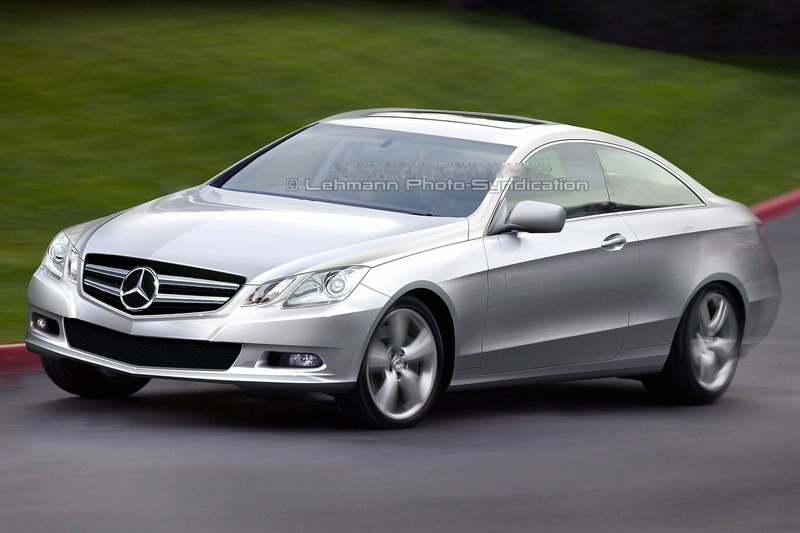ADVERTISEMENTS
More recently, however, Mercedes decided to replace the CLK with the similar E-Class coupe and convertible. But this two-door Benz remains an appealing pre-owned option. Offering refined road manners, a sufficient amount of sportiness and the expected levels of Mercedes-Benz luxury, safety and prestige, the CLK is certainly worth considering.
Most Recent Mercedes-Benz CLK-Class Models
Produced from 2003-'09, the second-generation Mercedes-Benz CLK-Class debuted in coupe form as the CLK320 (215-horsepower 3.2-liter V6), CLK500 (302-hp 5.0-liter V8) and CLK55 AMG (362-hp 5.4-liter V8). Convertible equivalents to all three joined for 2004. In 2005, the CLK500 switched from a five-speed automatic to the current seven-speed automatic transmission, and this was also the last year the CLK55 AMG was available in coupe form (and the year the navigation system switched from a CD-based to a DVD-based unit).
For 2006, the CLK320 became the CLK350 (268-hp 3.5-liter V6) and also got the seven-speed, while in 2007 the CLK500 and CLK55 converted to the CLK550 (382-hp 5.4-liter V8) and CLK63 AMG (475-hp V8), respectively. For 2008, the AMG coupe returned, but only in limited-edition "Black Series" form with a 500-hp V8, a track-tuned suspension and a six-figure price tag. Both the CLK63 AMG and the Black Series were dropped for 2009.
Notable standard equipment on the CLK included alloy wheels, leather upholstery, power seats, dual-zone climate control and a power tilt-and-telescoping steering wheel. Major options included a sport appearance package, a navigation system, an upgraded Harman Kardon audio system and keyless ignition. Interior accommodations were airy in CLK coupes, thanks to their B-pillarless design, while CLK convertibles had a quick-acting power-operated cloth top. In addition to the extra power, V8 models added a body kit, different-colored interior pieces and paddle shifters for the automatic transmission.
In reviews, we noted that the relaxed driving character of the current Mercedes-Benz CLK-Class made it more of a grand touring car than a sport coupe. The steering was slower than we'd like, but overall, the CLK handled fairly nimbly while riding comfortably. It was plenty quick, too. As a pre-owned option, there's a lot to like in the Mercedes-Benz CLK-Class if you value the Benz ownership experience.
Past Mercedes-Benz CLK-Class Models
The first-generation Mercedes-Benz CLK was produced for the 1998-2002 model years in coupe form, while the convertible was available from 1999-2003. Each debuted as a CLK320 powered by a 215-hp 3.2-liter V6. The CLK430 variant, motivated by a 275-hp 4.3-liter V8, arrived a year later. The high-performance CLK55 AMG coupe and its 342-hp 5.4-liter V8 joined the line in 2001. Its convertible equivalent followed in 2002, and both went away at year's end.
All models had standard leather, dual-zone automatic climate control, SmartKey keyless entry, a Bose cassette stereo, power seats with memory, front seat side airbags and antilock brakes. CLK430 models added 17-inch wheels, aero enhancements and different-colored interior items. CLK55 AMGs went further with a stiffer suspension, performance exhaust, xenon headlights, a sunroof, rain-sensing wipers, multicontour front seats, front seat heaters and a rear sunshade.
The first changes came for 1999, when stability control became standard on the CLK430 and optional on the CLK320. In 2000 this safety feature became standard across the board, as did Mercedes' new TeleAid emergency communications system. Also, the five-speed automatic transmission on all models gained a manual mode.
The original Mercedes-Benz CLK-Class didn't drive as nicely as the current one. Power wasn't the issue, as all CLKs of this generation were fine performers. In reviews at the time, we took issue with the transmission, which often second-guessed the driver's intentions and delivered badly timed shifts. In addition, the brake pedal was on the spongy side, and the CLK's old-fashioned recirculating-ball steering setup was numb and heavy. On the highway, the car always felt solid and composed, however. Actual braking distances were excellent, too. Besides that, the CLK55 AMG coupe was then the quickest production Benz in history, hitting 60 mph in 5 seconds flat.
Our gripes on the inside concerned the lack of a tilt steering wheel, limited rear-seat headroom and the complexity of many of the controls. CLK Cabriolets suffered from cramped rear legroom, mediocre rear visibility and a power top that wasn't fully automatic (all of which were improved on the second-generation CLK).
In general, we still think the BMW 3 Series coupes and convertibles of the time were more rewarding cars to drive, not to mention less expensive. Still, if we were buying a CLK, our choice would be either the CLK320 or the CLK430. The Mercedes-Benz CLK55 AMG, as fast as it was, didn't offer a big enough performance enhancement to justify its price hike.
Mercedes Clk
 mercedes clk gtr
mercedes clk gtr mercedes clk image
mercedes clk image mercedes clk dtm
mercedes clk dtm mercedes clk mercedes
mercedes clk mercedes
Post Title → Mercedes Clk Top Review
ADVERTISEMENTS